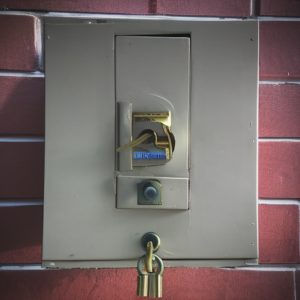You may have seen one of the most recent saving hacks on social media in the past year: the 100 envelope money saving challenge.
What is the 100 envelope challenge and how to get started?

This savings challenge is both simple and a fun way to save money – $5,050 to be exact.
Essentially it’s as easy as gathering up 100 envelopes and marking them with dollar amounts from 1 to 100 dollars.
You then store them in a shoe box and each day draw a random envelope from the shoe box.
If you draw envelope 9, you put $9 in it; and the next day if you remove envelope 78, you deposit $78 in it.
And then, after 100 days you will have set aside $5,050 in extra money.
Also read: Best Rewards Credit Cards Reviewed for Saving Money
Depending on your disposable income, the 100 day envelope challenge may have other negative consequences for you.
For example, with the original money challenge if on day one you remove envelope 97, you’ll be $97 down in your disposable income.
And if on day two you draw envelope 100, that will mean you’re down almost $200 in just two days.
There would be no point for you to participate in this challenge if you only end up digging yourself into a money hole.
Also watch this video by YNAB about The 100 Envelope Challenge
One solution to the 100 envelope money challenge
Instead of committing to depositing money every day for the next 100 days, consider what am0unt of money you can afford to “lose” per week.
For instance, try extending the time frame from 100 days to 200 days or even 300 days.
If you do this, you will only be depositing money every second or third day – but you will still end up reaching your savings goal of $5,050.
A variation to the 100 envelope challenge

Just like the original challenge, the idea here is to gather up 100 envelopes. Label each envelope with a different spending category, such as “groceries,” “restaurants,” “utilities,” and so on.
Then, put a set amount of cash into each envelope, based on your budget.
For example, if you have $100 to spend on groceries each month, put $100 in the envelope labeled “groceries.”
Now, when you need to spend money in one of those categories, you can only use the cash that you have in that envelope.
This will help you to stick to your budget and avoid overspending. Plus, it’s a great way to track where your money is going each month.
How much should you put in each envelope?

It depends on your budget, spending habits and savings goals.
However, a good rule of thumb is to put 50% of your income into long-term savings and investments, 30% into essential expenses (such as rent or mortgage payments), and 20% into discretionary spending (such as entertainment or dining out).
Also read: 15 Affordable date ideas you’ll love
If you’re not sure where to start, try using this percentages as a guideline for how much to put in each envelope.
For example, if your monthly income is $3,000, you would put $1,500 into long-term savings and investments, $900 into essential expenses, and $600 into discretionary spending.
Once you’ve determined how much to put in each envelope, it’s time to start saving! Put the envelopes somewhere safe—like a lockbox or safe deposit box—and only use the cash when necessary.
This way, you’ll always know exactly how much money you have to spend in each category.
Is it not better to save money in a savings account?
As fun as challenge it is, it may be better to create a separate savings account or fund and still participate in the challenge by transferring or depositing money into a bank account.
You can still use the envelopes, but rather than keeping your money in a paper piggy bank, rather let it gather some interest in a savings account or separate fund.
In conclusion, the 100 envelope challenge is a great way to save money and stay on budget – or set aside money. By allocating a set amount of cash to each spending category, you can avoid overspending and better track where your money goes each month.
Saving money and making money are two different activities, but each is as important as the other.
And while money saving challenges can be fun, it’s important that it still fits in with your financial commitments: like paying off debt, servicing your mortgage or rent, school fees and others.
So give it a try—you may be surprised at how much easier it is to stick to your budget when you’re using cash!
Also read:
How to Determine Your Wedding Guest List Size on a Budget
15 Cheap Wedding Ideas to save thousands
Is the ‘100 envelope challenge’ a smart money move?
Best Wedding Reception Order of Events for Your Big Day (4 steps to planning)
How Many People Should I Invite to My Wedding on a Budget?
Ideas for an Intimate Backyard Wedding (On a Budget)